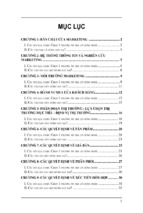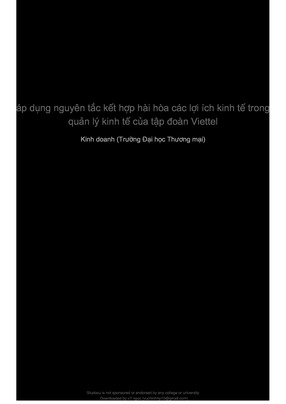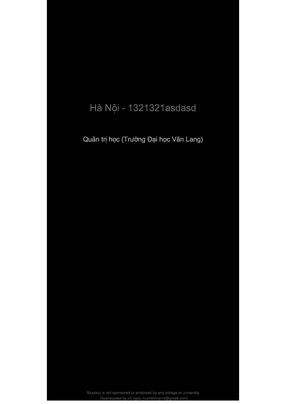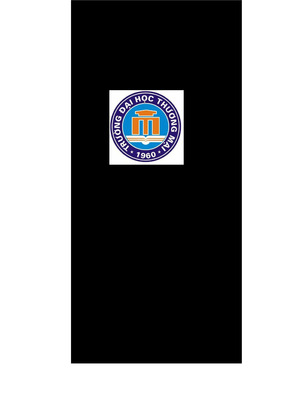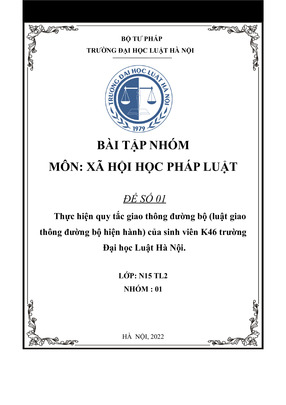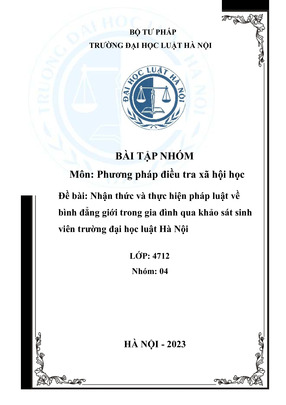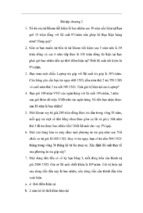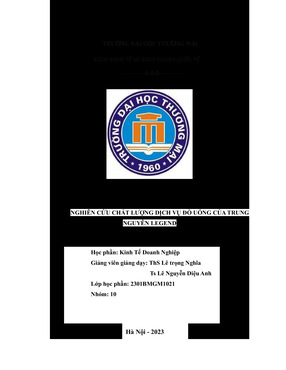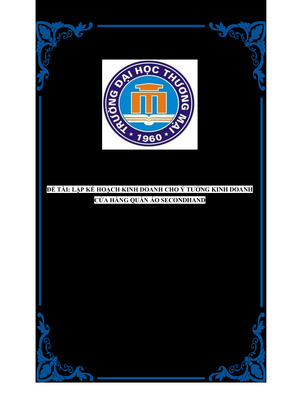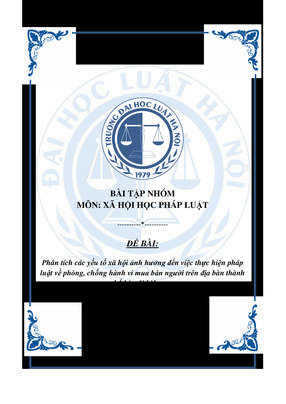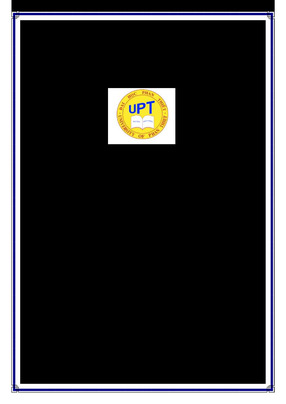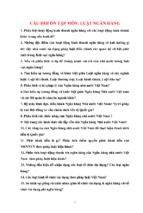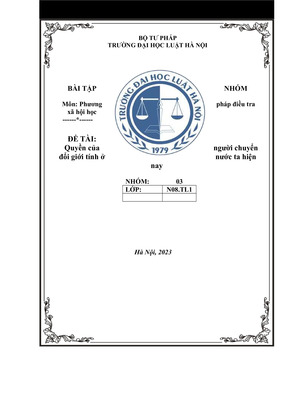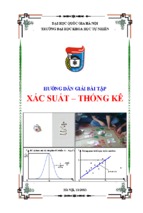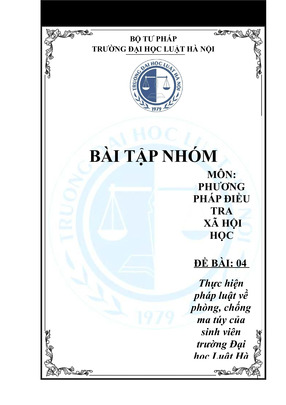PEOPLE’S COMMITTEE OF BINH DUONG PROVINCE
THU DAU MOT UNIVERSITY
---------------------
TA THI KIM OANH
VIETNAMESE-ENGLISH TRANSLATION ERRORS
BY THE FOURTH-YEAR ENGLISH MAJORS
AT BAC LIEU UNIVERSITY
MASTER THESIS
Major: THE ENGLISH LANGUAGE
Code: 8220201
Supervisor: Assoc Prof Dr. HOANG QUOC
BINH DUONG, December 2018
I
DECLARATION
The thesis entitled ―Vietnamese-English translation errors by the fourth-year
English majors at Bac Lieu University‖ is conducted under the supervision of Assoc
Prof Dr. HOANG QUOC. I declare that the information reported in this paper is the
result of my own work, except where due reference is made. The thesis has not been
accepted for any degree and is not concurrently submitted to any candidature for
any other degree or diploma.
Tạ Thị Kim Oanh
December, 2018
II
ACKNOWLEDGEMENTS
Firstly, I would like to express my deepest and heartfelt gratitude to my
supervisor, my teacher Assoc. Prof. Dr. Hoang Quoc who gave me invaluable
inspiration, support, devotion, and careful guidance as well as patience through the
whole course of my research. He is very enthusiastic, responsible and principled
supervisor. Before I had begun to do the research, he offered me a schedule to
follow. He devoted his precious time to read and give me perceptive feedback as
well as comments and suggestions on the previous drafts of each chapter. Without
him, the current study could not have seen the light.
Secondly, I am deeply indebted to my teacher Dr. Nguyen Hoang Tuan for
his initial ideas of the research topic, invaluable advice and great help.
My sincere thanks will be surely dedicated to all my lecturers of the Master
program for their profound knowledge, whole-hearted instructions and great
enthusiasms.
I cannot complete the research without support from my fellow friends in the
MA‘s program at Thu Dau Mot University. Therefore, I would like to thank them
for their comments and suggestions which contributed to the improvement of the
paper.
My thanks are due to my beloved students in the English Linguistic class
8DTA at Bac Lieu University (BLU), who involved in my experiment. Without
their assistance, my study could not have been conducted. I am also grateful to my
colleagues at the English Division, BLU, who gave me good conditions during the
time I followed the M.A. course. All of their help meaningfully contributed to the
completion of my study in the master program.
Finally, I would like to thank my family, especially my husband, who was
always by my side when I was in difficulties and gave me mental support as well as
great encouragement and motivation during my M.A. program.
III
ABSTRACT
The purpose of this study is to explore the translation errors made by the
English majors in translating Vietnamese into English. To analyze the data, the
researcher used both descriptive qualitative and quantitative research method and
used error analysis procedure. The participants of this study consist of 4 English
teachers and 40 English majors from the fourth-year in the academic year of
2017/2018. The main goal of this research is to find out common errors in
Vietnamese-English translation made by students of Bac Lieu University, the
teachers‘ perception as well as students‘ perception towards the causes of these
translation errors. The results from the study indicates that the students make
grammatical errors, lexical errors, and spelling errors. Based on the findings and
discussion of the result, the researcher concludes that the students still face
difficulties in using vocabulary and grammar.
Key Words: Translation, translation error, grammar error.
IV
TABLE OF CONTENTS
DECLARATION ...................................................................................................... II
ACKNOWLEDGEMENTS ....................................................................................III
ABSTRACT ............................................................................................................ IV
TABLE OF CONTENTS ......................................................................................... V
LIST OF TABLES ............................................................................................... VIII
LIST OF CHARTS ................................................................................................ IX
CHAPTER 1: INTRODUCTION ............................................................................1
1.1 Background to the study .................................................................................1
1.2 Aims of the study .............................................................................................3
1.3 Limitation of the study ....................................................................................3
1.4 Significance of the study ..................................................................................3
1.5 Research questions...........................................................................................3
1.6 The organization of the research ....................................................................4
1.7 Chapter summary ............................................................................................4
CHAPTER 2: LITERATURE REVIEW ................................................................5
2.1 Theory of translation .......................................................................................5
2.1.1 Definition of translation ............................................................................5
2.1.2 Translation equivalence ............................................................................7
2.1.3 Translation methods..................................................................................7
2.1.4 Translation strategies ................................................................................8
2.2 Factors affecting translation process ...........................................................15
2.2.1 Cultural factor .........................................................................................15
2.2.2 Mother tongue factor ..............................................................................16
2.3 Errors in foreign language learning .............................................................17
2.3.1 Definition of error ...................................................................................17
2.3.2 Translation errors ...................................................................................18
2.3.3 Classification of errors ............................................................................18
2.3.4 Errors and mistakes ................................................................................22
2.3.5 Definition of error analysis .....................................................................22
2.4 Common errors in translation ......................................................................22
2.4.1 Grammatical error ..................................................................................22
2.4.2 Vocabulary errors ...................................................................................23
V
2.5 Review of related research ............................................................................25
2.6. Chapter summary .........................................................................................27
CHAPTER 3: METHODOLOGY .........................................................................28
3.1 Research design ..............................................................................................28
3.2 Research participants ....................................................................................28
3.2.1 Teacher participants ...............................................................................28
3.2.2 Student participants ................................................................................28
3.3 Population and sample ..................................................................................29
3.4 Instruments and procedures .........................................................................29
3.5 Technique of data analysis ............................................................................31
3.5.1 Collection of samples ...............................................................................32
3.5.2 Identification of errors ............................................................................32
3.5.3 Classification of errors ............................................................................32
3.5.4 Explanation of errors ..............................................................................32
3.5.5 Evaluation of errors ................................................................................32
3.6 Validity and reliability ..................................................................................33
3.6.1 Validity .....................................................................................................33
3.6.2 Reliability .................................................................................................33
3.7 Chapter summary ..........................................................................................33
CHAPTER 4: FINDINGS AND DISCUSSION ...................................................34
4.1 Findings...........................................................................................................34
4.1.1 Results from the questionnaire ..............................................................34
4.1.2 Results from the interview to the teachers ............................................46
4.1.3 Results collected from the assignment and test papers. .......................48
4.2 Discussion of result ........................................................................................62
4.3 Summary of major findings ..........................................................................65
4.4 Chapter summary ..........................................................................................66
CHAPTER 5: CONCLUSIONS AND SUGGESTIONS .....................................68
5.1 Conclusions .....................................................................................................68
5.2 Suggestions .....................................................................................................70
5.1.1 Suggestions for Teachers ........................................................................70
5.1.2 Suggestions for the students ...................................................................71
5.1.3 Suggestions for further research ............................................................72
VI
5.3 Chapter Summary .........................................................................................72
REFERENCES ........................................................................................................73
APPENDICES .........................................................................................................76
VII
LIST OF TABLES
Table 4.1. The students‘ attitude towards translation subject ....................................... 34
Table 4.2.Students‘ feeling of learning translation ....................................................... 35
Table 4.3. Translation subject supports their language learning .................................. 36
Table 4.4. Difficult type of translation texts ................................................................. 37
Table 4.5. The difficulties of the English translation skill ............................................ 37
Table 4.6. The students‘ difficulties in translating Vietnamese-into-English texts ...... 38
Table 4.7. The students‘ mistakes in translating Vietnamese-into-English texts ......... 39
Table 4.8. The students‘ thought of choosing texts to translate by themselves
whether effective or not ................................................................................................ 39
Table 4.9. The students‘ learning grammar points........................................................ 41
Table 4.10. The amount of self-study time per week.................................................... 41
Table 4.11. The amount of self-study time per day ...................................................... 42
VIII
LIST OF CHARTS
Chart 4.1. Topic of translation texts which the students are interested in .................... 40
Chart 4.2. Type of translation texts ............................................................................... 43
Chart 4.3. How to solve problems ................................................................................. 44
Chart 4.4. What to do to improve translating skill ........................................................ 44
Chart 4.5. The students‘ frequency of using reference books ....................................... 45
Chart 4.6. The students‘ thought of the factors which help their translating
Vietnamese-to-English texts. ........................................................................................ 46
Chart 4.7. Types of translation errors ........................................................................... 49
Chart 4.8. Types of grammatical errors ........................................................................ 50
Chart 4.9. Distribution of lexical error types ................................................................ 60
IX
LIST OF ABBREVIATION
BLU: Bac Lieu University
SL: Source Language
TL: Target language
L1: The first language
L2: The second language
L3: The third language
L4: The fourth language
EFL: English as a Foreign Language
X
CHAPTER 1: INTRODUCTION
This chapter consists of the background to the study and the aims of the
study. The limitation of the study and significance of the study are provided
followed by the research questions. The organization and chapter summary of the
research are presented in the end.
1.1 Background to the study
In the world of globalization, English is an important language to make the
communication process easier. It has become an international language. It is used in
the educational books, international meeting, international schools, etc. that use
English as a medium of language. Therefore, many countries engage this language
in the curriculum. In Vietnam, English is taught as one of the foreign languages.
Kenji (2000) confirms that ―English is used not only for communication between
native speakers and nonnative speakers of English but also between nonnative
speakers, and it is the most widely used language in the world, and it will be used
by more people in the future‖.
Both English and Vietnamese have some different systems of conventions in
arranging the elements of language, so countries are able to have mutual
understanding and a sense of global citizenship in this multilingual world, people
have to thanks to their English translated versions. It is considered as an effective
means to learn how to appreciate different countries‘ beauty of cultural values.
Moreover, English translation makes people understand each other more in the
process of diplomatic relations and economic cooperation and other fields in today‘s
era when countries tend to integrate for the whole development. Therefore, English
translation has gradually become an indispensable and pressing tool which set the
path for the global success of individuals, organizations, and even businesses in the
modern time when society is more developing and competition is relentless. To get
the ideal future jobs, Vietnamese students have to have expert translation skill in
order to meet the demand of integration into the world economy and culture
exchange with other countries.
It has been widely thought that translation is a process of substituting words
of one language with that of another, followed by adjusting word order and
grammatical forms. Some students know the vocabulary, but they do not know how
to put them into sentences. Translation is one of the causes of errors. It happens
because a student translates his first language sentence or idiomatic expression into
the target language word by word. Therefore, translation is one of the important
skills in studying a language. Translation is the one of the ways to acquire language
as a second or foreign language so that translation skill is much needed in learning
English as a second or foreign language.
1
According to Husain (1996), translation can be applied as an effective means
of promoting learners‘ language learning since using learners‘ mother tongue in
language learning process can intensify learners‘ confidence and also give them
positive feeling of relaxation.
To produce a good translation, the translator has to know almost perfectly the
language translate from the language to be translated into. There has to be no
mystery for the translator in the original text and the translator has to understand
every nuance so that he/she does not lose pieces of important information. In other
words, translation is not merely the transfer of words in source language (SL) into
those target language (TL) or vice versa.
In reality, Vietnamese-English translation skill is not easy for Vietnamese
students to master, so learners cannot often avoid mistakes in their translating
practice. Perhaps, because of the influence of the mother tongue, the differences of
syntax, phonology, semantic and cultures or their own limited language ability,
Vietnamese students of English in general still have errors in translating
Vietnamese texts into English.
Bac Lieu province is the part of the Ca Mau Peninsula and Me Kong Delta as
well where the economic, social conditions have not yet developed. Bac Lieu
University has experienced ten years of establishment and development. It is
essential for training human resource for hometown and the Ca Mau Peninsula.
Therefore, one of the main task of the school is training and fostering teachers and
staffs with professional skill at all educational levels and highly qualified personnel
in other areas such as Ca Mau, Soc Trang in order to contribute to the development
of hometown and the Ca Mau Peninsula.
In the integrated period, the schools also show special concern for training
English majors who have expert translation skill as well as other skills of English so
that they are able to contribute their own real linguist abilities to the society‘s
development. However, it is not easy for Vietnamese students who have never
traveled overseas to have a great command of English. Translation may be a
difficult task, especially for those who have a little knowledge of English and
foreign cultures or a specific industry related topic. To complete this task,
understanding the difficulties of Vietnamese students when practicing translation,
Vietnamese-English translation is considered as a significant class for Vietnamese
students of English major by Bac Lieu University. Therefore, this research that
entitle ―Vietnamese-English translation errors by the fourth-year English majors at
Bac Lieu University‖ is purposed to analyze the errors in translation made by
students of English majors at Bac Lieu University. It is expected that the research
will be a useful reference helping improve translation skill for not only the students
majoring in English of Bac Lieu University but also all Vietnamese people who are
interested in translation work and really want to become expert translators.
2
1.2 Aims of the study
The primary aim of the thesis is to identify the English majors‘ errors in
translating Vietnamese texts into English. The study also aims at finding causes of
these problems and then suggesting some possible strategies to overcome the
problems. The targeted subject of this thesis are mainly students; besides, all people
who are interested in translation work can consider it as a useful reference for
improving their translating skills as well.
1.3 Scope of the study
This research only observed the errors in the translation text. Base on
superficial basis of error classifications from Corder (1981: 36) which are errors of
omission, error of addition, error of selection, and error of ordering in translation
texts of the English majors of Bac Lieu University in the academic year of
2017/2018. This research only used the translation texts of the English Department
students of Bac Lieu University in the academic year of 2017/2018 as object of the
research. The participants are 40 English students from one English major class and
4 English teachers. Two translation tests, a questionnaire and an interview were
used to collect data and they were done in class and outside with limited time.
Therefore, the result might not reflect completely the students‘ ability in translation.
1.4 Significance of the study
The significance of this study can be classified into:
For the teacher
The result of the research can show the students‘ progress in learning
translation, so it can be used as a reference for the teacher about what technique or
strategy that should be applied in teaching English to improve the student‘s ability.
For the students
The result of the research can show to the students about the errors they
made, so by reading the analysis they can know their fault and know the right
pattern of translation. The researcher hopes it can give insight view of errors in
translation texts of English majors at Bac Lieu University.
For the researcher
The result of the research provides evidence of how language is learned or
acquired and the strategies or procedures that used by students. By analyzing the
study, the researcher can improve the knowledge about the average of students‘
ability in mastering English, so the researcher can find the best way to teach
translation in the future. This research is also expected to contribute knowledge
about the study of grammar in translation text.
1.5 Research questions
To obtain the above stated purposes, the research has to answer the following
questions:
3
1. What are the common errors found in translation texts of English majors of Bac
Lieu University in the academic year of 2017/2018?
2. What can be recommended to avoid such errors in order to make VietnameseEnglish translation more effective?
1.6 The organization of the research
The research has five chapters: Introduction, Literature Review, Research
Methodology, Results and Findings, and Discussions.
Chapter 1 introduces the background of the research, research aims, research
limitation, research significance, and research questions.
Chapter 2 provides the theory of translation, theory of errors, factors
affecting translation process. It also review the previous study relating to errors in
translation.
Chapter 3, methodology, presents the research methodology used in this
study.
Chapter 4 is to find out common errors in Vietnamese-English translation
made by students of Bac Lieu University, the teachers‘ perception as well as
students‘ perception towards the causes of these translation errors.
Chapter 5 discusses the connections among results found based on
theoretical background, the study limitations as well as the suggestions for further
studies.
1.7 Chapter summary
This chapter provides the background of the study and presents the rationale
for investigation into students‘ Vietnamese-English translation errors on the basic of
which the research questions were established.
4
CHAPTER 2: LITERATURE REVIEW
This chapter introduces theory of translation in which definition of
translation, translation equivalence, translation methods will be presented. In
addition, some factors affecting translation process including cultural factor and
mother tongue factor will be provided. Besides, theory of errors in language
learning including definitions of errors, translation of errors, classification of
errors, errors and mistakes, definitions of error are presented. Moreover, common
errors in translation such as grammatical errors, vocabulary errors will be shown.
Finally, some related concepts in translation theory including definitions of
translation, kinds of translation, translation strategies and factors affecting
translation process, previous relevant studies and chapter summary are covered.
2.1 Theory of translation
2.1.1 Definition of translation
In order to comprehend the current research precisely, the term ―translation‖
must initially be defined. In fact, the term has been variously defined by lots of
linguistics and language experts. The following definitions are selected because
they relate to my research.
Newmark (1989:7) describes that translation is a craft consisting in the
attempt to replace message and/or statement in one language by the same message
and/or statement in another language. In addition, Nida & Taber (1982: 12) explain
that translating consists in reproducing in the receptor language the closest natural
equivalent of the source-language message, first in terms of meaning and secondly
in terms of style. Bell (1991:5) also states that translation is the expression in
another language (or target language) of what has been expressed in another (source
language), preserving semantic and stylistic equivalencies.
According to Bell (1991: 6), translation is the replacement of a
representation of a text in one language by a representation of an equivalent text in a
second language. For example, the Vietnamese sentence “Người bắt đầu học ngoại
ngữ luôn luôn gặp khó khăn ngay từ bước đầu.” can be translated into the English
sentence “Beginners of foreign language always face difficulties from the outset.”
(Tran Van Diem, 1998). The author continues, and makes the problems of
equivalence very plain: ―Texts in different languages can be equivalent in different
degrees (fully or partially different), in respect of different levels of presentation (in
respect of context, of semantics, of grammar, of lexis) and at different ranks (wordfor-word, phrase-for-phrase, sentence-for-sentence)‖.
Tu Anh (2005:10, 16) defines ―Translation is the transmission of a thought
expressed in one language by means of another language. The language used to
5
express the thought directly is called the source language, and the language used to
translate that thought is called the target language‖.
In Vietnamese-into-English translation, the Vietnamese is the source
language and the English is the target language as in the following example: The
source language: Dịch thuật là môn học bắt buộc đối với sinh viên chuyên Anh ngữ.
The target language: Translation is a compulsory subject for students of English
major. Bui Tien Bao and Dang Xuan Thu (1997:3) state translation is rendering a
written text into another language in the way that the author intended the text.
Translators are concerned with the written word. They render written texts from one
language into another. Translators are required to undertake assignments, which
range from simple items, such as birth certificates and driving licenses, to more
complex written materials, such as articles in specialized professional journals,
business contracts and legal documents.
According to the theorists above, it can be concluded that translation is a
process of transferring a text from one language (source) into another (target) with
an aim of keeping the meaning and style of the two texts equivalent. Therefore, the
translator is required to be good in not only linguistic performance but also in the
subject knowledge. However, keeping the meaning and style of the source text
equivalent to the target one is a difficult task because the translator needs to master
both languages. And translation itself poses many problems because of inherent
linguistic and nonlinguistic factors.
Vietnamese students have difficulties translating Vietnamese to English and
vice versa because they do not achieve a good level of language knowledge and
cannot apprehend the linguistic differences between English and Vietnamese. Bui
Tien Bao and Dang Xuan Thu (1997) explain about language that in syntax, there
are rules, which tell us how to put the words together, their sequence. I can say in
English: I have a red book, but the Vietnamese would say: I have a book red. Every
language has its own order of words in the sentence and we must respect that. Once
we know a language, we can use the rules; we can make new sentences and phrases.
In addition, regional variations of a language are called dialects. New Zealand,
Australian and US English can be considered dialects of English. It is very difficult,
however, to define a dialect as such, i.e. to decide when two tongues are to be
classified as separate languages instead of one being a dialect of the other. There is
a rule of thumb, which states that two dialects become different languages when
they are mutually unintelligible, when people of one language group can no longer
understand members of the other group. Besides, the translators have to master
words, idiolect, slang, idioms.
In conclusion, translation is the replacement of a source language text by a
target language equivalent text in which the meaning of the text and author‘s
intention is preserved.
6
2.1.2 Translation equivalence
According to Peter Newmark (1989), translation equivalence is an unwritten
rule about translation which people know and which influences the form of
translating exchange. Catford (1965) states that the central problem of translation is
that of finding target language equivalence. In trying to solve the problem of
translation equivalence, Newbert (1985) claims that translation equivalence must be
considered a semiotic category consisting of the components (syntactic, semantic
and pragmatic). These components are arranged in a hierarchical relationship,
where semantic equivalence takes priority over syntactic equivalence and pragmatic
equivalence conditions and modifies both the other elements. Equivalence overall
results from the relation between signs themselves, the relationship between signs
what they stand for and those who use them. In other word, translation equivalence
is the similarity between a word or expression in one language and its translation in
another. In general, to achieve translation equivalence requires translators to
produce the same effect (or one as close as possible) on the readership of the
translation as was obtained on the readership of the original. The translation
equivalence is showed in some rules and principles which are very useful for the
translators.
2.1.3 Translation methods
In ―A textbook of translation‖, Newmark (1989: 45) put the translation
methods in the form of a flattened V diagram:
SL emphasis
TL emphasis
Word-for-word translation
Adaptation
Literal translation
Free translation
Faithful translation
Idiomatic translation
Semantic translation
Communicative translation
2.1.3.1 Word-for-word translation
This is often demonstrated as interlinear translation, with The TL
immediately below the SL words. The SL word-order is preserved and the words
translated singly by their most common meanings, out of context. Cultural words
are translated literally. The main use of word-for-word translation is either to
understand the mechanics of the source language or [o construe a difficult text as a
pre-t ran slat ion process.
2.1.3.2 Literal translation
The SL grammatical constructions are converted to their nearest TL
equivalents but the lexical words are again translated singly, out of context. As a
pre-translation process, this indicates the problems to be solved.
2.1.3.3 Faithful translation
A faithful Translation attempts to reproduce the precise contextual meaning
of the original within the constraints of the TL grammatical structures. It ―transfers‖
7
cultural words and preserves the degree of grammatical and lexical 'abnormality'
(deviation from SL norms) in the translation. It attempts to be completely faithful to
the intentions and the text-realisation of the SL writer.
2.1.3.4 Semantic translation
Semantic translation differs from 'faithful translation' only in as far as it must
take more account of the aesthetic value (that is, the beautiful and natural sounds of
the SL text, compromising on 'meaning' where appropriate so that no assonance,
word-play or repetition jars in the finished version. Further, it may translate less
important cultural words by culturally neutral third or functional terms but not by
cultural equivalents - une nonne repassant un corporal may become ―a nun ironing
a corporal cloth‖ - and it may make other small concessions to the readership. The
distinction between ―faithful‖ and ―semantic‖ translation is that the first is
uncompromising and dogmatic, while the second is more flexible, admits the
creative exception to 100% fidelity and allows for the translator's intuitive empathy
with the original.
2.1.3.5 Adaptation
This is the ―freest‖ form of translation. It is used mainly for plays and poetry;
the themes, characters, plots are usually preserved, the SL culture converted to the
TL culture and the text rewritten. The deplorable practice of having a play or poem
literally translated and then rewritten by an established dramatist or poet has
produced many poor adaptations, but other adaptations have rescued period plays.
2.1.3.6 Free translation
Free translation reproduces the matter without the manner, or the content
without the form of the original. Usually it is a paraphrase much longer than the
original, a so-called ―intralingual translation‖, often prolix and pretentious, and not
translation at all.
2.1.3.7 Idiomatic translation
Idiomatic translation reproduces the 'message' of the original but tends to
distort nuances of meaning by preferring colloquialisms and idioms where these do
not exist in the original.
2.1.3.8 Communicative translation
Communicative translation attempts to render the exact contextual meaning
of the original in such a way that both content and language are readily acceptable
and comprehensible to the readership.
2.1.4 Translation strategies
According to Bui Tien Bao and Dang Xuan Thu (1997), the following
strategies have been suggested by translators, commissioners of translations, and
others involved in translating as ways to approach difficulties in translation from
English to Vietnamese. This list reflects only the main issues.
2.1.4.1 Strategy 1: How to deal with non-equivalence at word level
8
It is often the case that no direct equivalents can be found in Vietnamese for
English words. It may be that the concept or idea is new to Vietnam, as is the case
with "gender", which is in fact a relatively new concept in general, and a difficult
one to understand and explain in many languages. Or, it may be that the concept is
known or readily understood but there is no specific word in Vietnamese to express
it. Another difficulty is that, in addition to their concrete meaning, some words have
special connotations that are not conveyed by the Vietnamese word for the same
thing. The strategies listed below can be used to handle cases of non-equivalence.
Translation by more specific word
In some cases, it may be appropriate or necessary to use a more specific
word to translate an English word into Vietnamese. This usually involves choosing
among several different words, as there may be many Vietnamese words that
correspond to the general category or meaning expressed by the English term. For
example, Vietnamese has many words that mean "to carry" with distinctions being
made depending on the size and shape of the object; its animacy (e.g. a child as
opposed to a box); and how it is carried (e.g. in the hand, in both arms, etc.).
Similarly, the English word "rice" can be translated by many different Vietnamese
words, depending on whether one is planting it, harvesting it, cooking it, or eating
it. In these cases, the English word alone is not enough to determine the appropriate
Vietnamese translation, and it is necessary to examine the English context in
deciding which Vietnamese word is to be used.
Translation by more general word
In other cases, it may be appropriate to use a more general word to translate
an English word with no specific Vietnamese equivalent. For instance, English
makes distinctions among mopeds, scooters, and motorcycles, the latter having
larger wheels and engines than both mopeds and scooters; Vietnamese, on the other
hand, refers to all two-wheel, motorized vehicles as "xe máy". Similarly, the
English "paw", "foot", and "leg" may all be translated by the Vietnamese "chân",
which does not present problems of comprehension in Vietnamese, as it should be
clear from the context which of these words is meant. Another example can be
found in a manual on community development, which translates "matrix" by the
Vietnamese "ma trận". However, in Vietnamese, "ma trận" has a specific use in
mathematics only, and does not have the additional sense of a model or plan
according to which something is developed. In this instance, "matrix" is better
translated as "bảng", which is a more general word used to classify a written plan or
formula.
Translation by culture substitution
This strategy involves replacing a culture-specific item or expression with
one of different meaning but similar impact in the translated text. Because of their
self-described "respect" for the original text, most Vietnamese translators object to
9
this strategy and tend to translate directly, even when it may be highly
inappropriate. For example, a farmers' manual that has been translated into
Vietnamese suggests the planting of different types of fruit and fuel trees that are
not even grown in Vietnam. The original manual, which was developed in other
parts of Asia, was not modified at all for the Vietnamese context. Though some
translators argue that it is not the responsibility of the translator to change the text in
this way, the translator is in fact an important role here. Translators should be
encouraged to question the appropriateness of the documents they are translating
and suggest changes to make them more culturally appropriate. However, this is not
only the burden of the translator, but also of the commissioner of the translation and
the editor. In addition, field testing of documents will elicit useful feedback on
cultural appropriateness.
Translation using a loan word plus explanation
There is some resistance to this strategy in Vietnam, as many translators
prefer to create new Vietnamese words rather than borrow English words. However,
this strategy can be useful when dealing with concepts or ideas that are new to
Vietnam, cultural specific items, and proper names of diseases or medicines that are
widely known by their English names. For example, HIV and AIDS are two loan
words that are frequently used in Vietnamese, as they are referred to by their
English names in most of the world. Because these words have been in common use
in Vietnam for some time now, they are often used without any accompanying
explanation, which is not advisable. Whenever a loan word is used, it is best to offer
an explanation either in parentheses or a footnote. Another example is the acronym
for oral dehydration salts, or ORS, which is printed on every package; and hence
easily recognized; this is usually written in its English form with an explanation in
parentheses as follows: ORS (muối bù mất nước).
Translation by paraphrase
This strategy can be used when translating an English word or concept that
does not exist in Vietnamese, or when the Vietnamese term for it does not include
all the meanings conveyed by the English term for the same concept. For example,
in the sentence "pregnant women should avoid alcohol," the English word includes
all alcoholic beverages in its meaning. The Vietnamese word for alcohol, ―rượu",
does not include beer in its definition, so the Vietnamese translation should add the
word ―beer‖ to reflect the full meaning of the source language sentence ―Phụ nữ
mang thai nên tránh uống rượu, bia‖. To cite another example, the English term
"abuse" and "neglect" signify a whole range of behaviors, some of which are not
conveyed by the Vietnamese terms alone. Therefore, the sentence, "Children shall
be protected from abuse and neglected‖ cannot be translated simply as "Trẻ em phải
được bảo vệ khỏi sự lạm dụng và lơ là‖ as was suggested by one translator. This
does not account for their full meanings, which must be unpacked for better
10
- Xem thêm -


